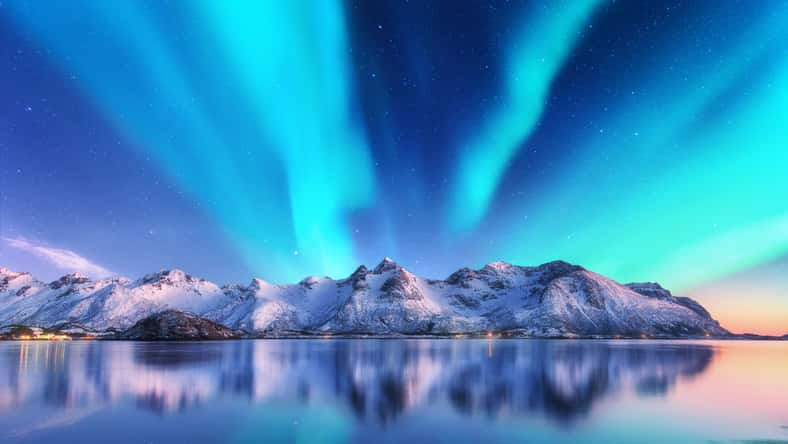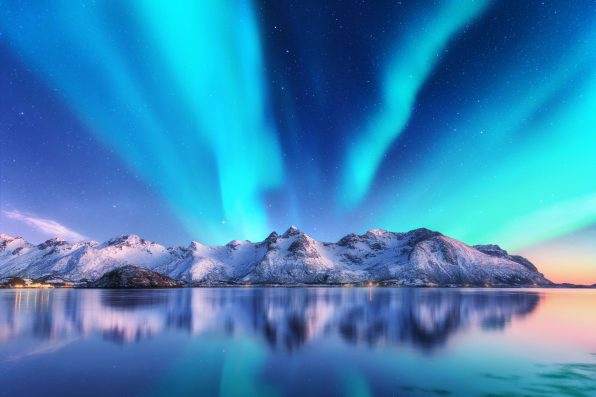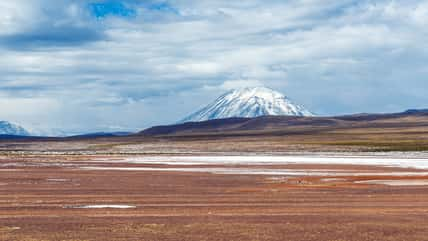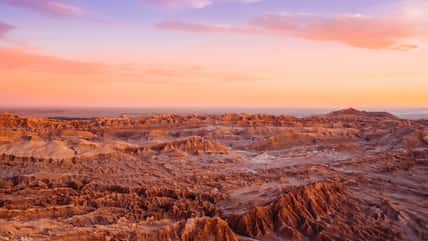Solar Storms Cause Auroras To Appear On Earth, Brightening Our Skies With Striking Color Patterns In A Dynamic Natural Light Display

When storms from the sun engulf our planet, auroras take place on Earth. These natural light displays brighten up the sky with beautiful patterns of colors that appear as curtains, spirals, rays, or flickers.
Classic solar behavior is described as the sun’s wind hitting the Earth’s magnetic field and forming a bow shock on the side of the field that faces the sun.
At the bow shock, the particles that make up the solar wind are slowed and heated. Then, they take a detour around the planet.
“The fast-moving plasma of the solar wind blows past Earth, but it cannot penetrate our magnetosphere,” Maxim Markevitch from NASA’s Goddard Space Flight Center explained in 2018.
“The solar wind has a magnetic field, and the Earth’s magnetosphere is almost like a solid body for that wind. So, the solar wind forms a bow shock in front of the outer edge of the magnetosphere.”
Last year, on April 24, 2023, a rare and peculiar incident occurred. The sun blasted a surge of charged particles at the Earth’s magnetic field and lit up the skies from Arizona to Arkansas, as well as in parts of Australia and New Zealand, which was normal enough.
What was completely out of the ordinary was that these particles temporarily shut off Earth’s bow shock, opening up a “two-way highway” for charged particles to travel from Earth to the sun. That resulted in a solar light show of auroras that were too dim to see due to the brightness of the sun.
“Particles trapped by Earth’s magnetism suddenly had an escape—a direct path to the sun!” NASA wrote on social media.
A coronal mass ejection (CME), a plasma-rich component of the solar wind, was responsible for creating the “highway.” Typically, a CME moves faster than the speed of magnetic waves, known as Alfvén waves.

den-belitsky – stock.adobe.com – illustrative purposes only
During the solar storm last April, NASA’s Magnetospheric Multiscale spacecraft observed that the Alfvén waves were faster, which caused the bow shock to disappear for a short time.
According to NASA, Alfvén “wings” magnetically connected Earth to the part of the sun that had erupted.
The wings are named after Hannes Alfvén, a Swedish physicist and Nobel laureate. He theorized the behavior of auroras, figuring out that they occurred due to charged particles launched from the sun into our planet’s atmosphere through its magnetic field.
In 1970, he won the Nobel Prize in physics for his work on the nature of electromagnetic waves and how they traveled through charged gas, which created a new field of study called magnetohydrodynamics.
The spacecraft’s instruments recorded our planet spewing plasma into the sun for roughly two hours.
The phenomenon is rare on Earth but common in other parts of the universe. Similar magnetic highways that transport charged particles are found between Jupiter and its moons Io and Ganymede. Brilliant auroras have been seen there as well.
The research is detailed in a paper published in the journal Geophysical Research Letters.
Sign up for Chip Chick’s newsletter and get stories like this delivered to your inbox.
More About:News





